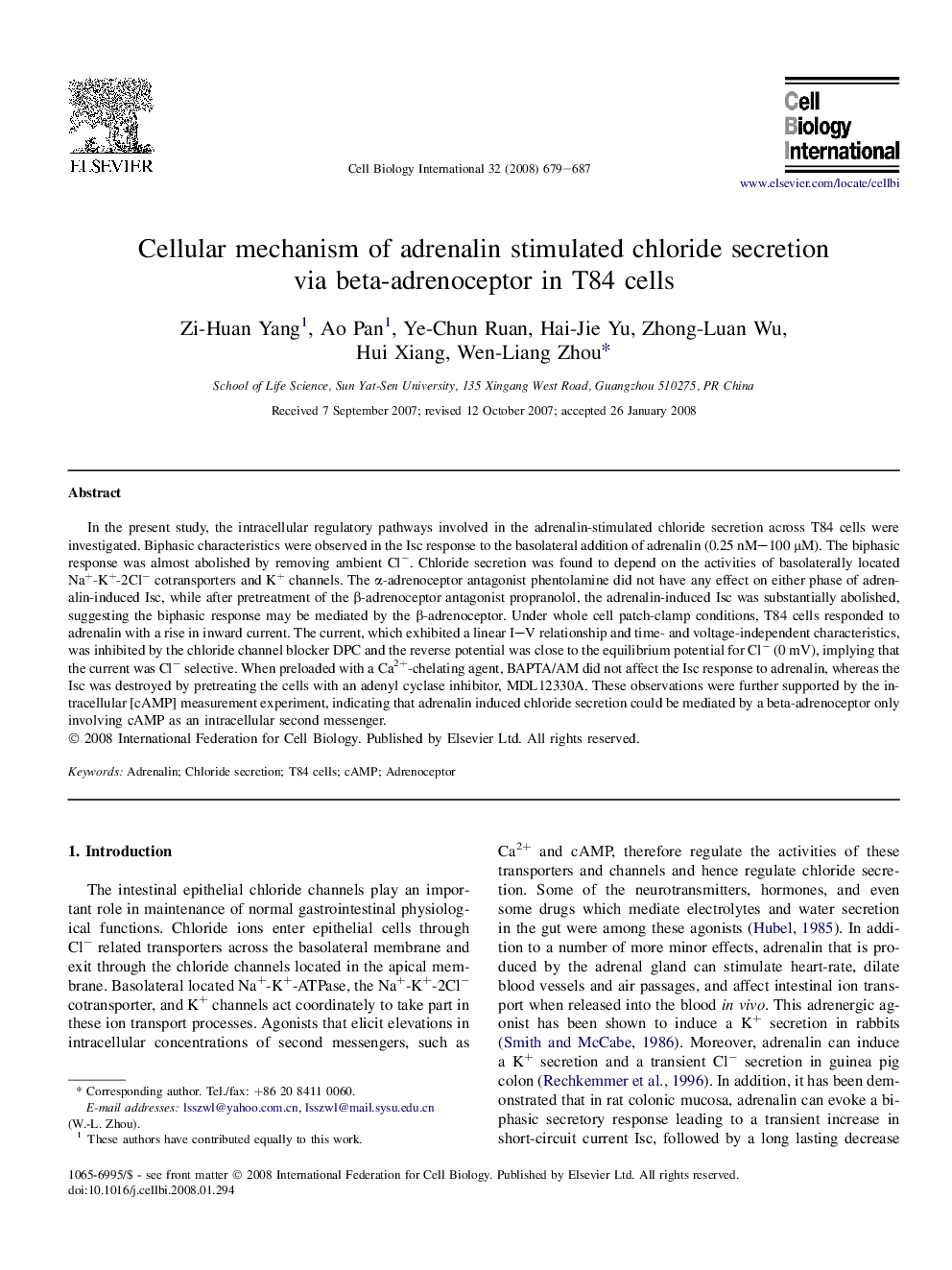| Article ID | Journal | Published Year | Pages | File Type |
|---|---|---|---|---|
| 2067358 | Cell Biology International | 2008 | 9 Pages |
Abstract
In the present study, the intracellular regulatory pathways involved in the adrenalin-stimulated chloride secretion across T84 cells were investigated. Biphasic characteristics were observed in the Isc response to the basolateral addition of adrenalin (0.25 nM-100 μM). The biphasic response was almost abolished by removing ambient Clâ. Chloride secretion was found to depend on the activities of basolaterally located Na+-K+-2Clâ cotransporters and K+ channels. The α-adrenoceptor antagonist phentolamine did not have any effect on either phase of adrenalin-induced Isc, while after pretreatment of the β-adrenoceptor antagonist propranolol, the adrenalin-induced Isc was substantially abolished, suggesting the biphasic response may be mediated by the β-adrenoceptor. Under whole cell patch-clamp conditions, T84 cells responded to adrenalin with a rise in inward current. The current, which exhibited a linear I-V relationship and time- and voltage-independent characteristics, was inhibited by the chloride channel blocker DPC and the reverse potential was close to the equilibrium potential for Clâ (0 mV), implying that the current was Clâ selective. When preloaded with a Ca2+-chelating agent, BAPTA/AM did not affect the Isc response to adrenalin, whereas the Isc was destroyed by pretreating the cells with an adenyl cyclase inhibitor, MDL12330A. These observations were further supported by the intracellular [cAMP] measurement experiment, indicating that adrenalin induced chloride secretion could be mediated by a beta-adrenoceptor only involving cAMP as an intracellular second messenger.
Related Topics
Life Sciences
Biochemistry, Genetics and Molecular Biology
Biophysics
Authors
Zi-Huan Yang, Ao Pan, Ye-Chun Ruan, Hai-Jie Yu, Zhong-Luan Wu, Hui Xiang, Wen-Liang Zhou,
